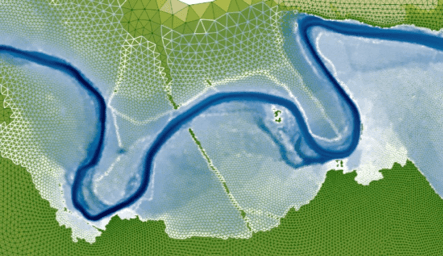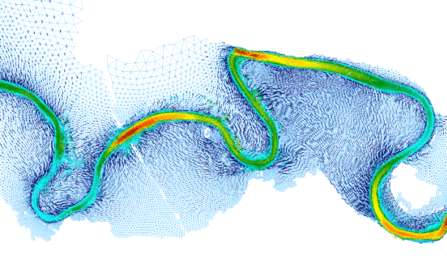Responsable
Fecha inicio
Fecha fin
Grupo
División
There is a broad variety of physical phenomena that can be explained from the perspective of fluid mechanics and play an important role in many natural processes of present-day environmental concern. These problems are mathematically represented by systems of integral or partial differential equations which formally describe the fundamental laws for the conservation of certain physical quantities of interest. Such equations are difficult to solve and, actually, no general analytical solution has been found. Nowadays, the combination of modern supercomputers with cutting-edge simulation tools has brought society the capacity to solve very complex problems while being predictive.
High-performance computing systems are increasingly complex and their efficient use requires the combination of high resolution numerical methods with a conscious programming architecture. When aiming at simulating events lasting several days, the need to accelerate the computational time becomes essential if the predictive nature of the tool has to be preserved.
The utilization of fast and reliable predictive tools and their application to the resolution of inverse problems will be a breakthrough in this field as they will provide very efficient strategies based on the predicted/controlled quantitative variables: water depth, flow velocities, sediment concentration, chemical species concentration and population of biological species. An analogous methodology can be used to evaluate contaminant release episodes in rivers. It will be possible to estimate with high accuracy the pollutant injection point solving the so-called optimal boundary reconstruction inverse problem. In this project, the control and optimization of different environmental and industrial processes of a broad variety will be addressed. Additionally, the application of control methods in the framework of shallow water flows will certainly represent a great advance in the optimization of industrial processes such as water treatment plants, where the energy cost of the processes can be potentially reduced.
Numerical simulation of sediment transport, erosion/deposition and movable bed problems has also been thoroughly studied and implemented. It has also been further extended to solve mud and debris flows. Our main effort will then consist in focusing on the needed additional elements for a successful overall development of the tools. In this context the number and complexity of challenging issues to be addressed is significant. A research effort will thus be done in order to adapt the present know-how to the actual needs of the project.

